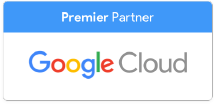The proliferation of technology in our lives continues to come at a great risk to our privacy. From a young age, I religiously ensured that any computer I used was equipped with antivirus software, mostly because it was what I was instructed to do, and later became a habit.
But it wasn’t until recently, maybe within the last five years or so, that I discovered cyber-security protections for other devices, like smartphones and tablets. It isn’t yet second-nature to me to remember to scan my phone for viruses as often as my PC. Now, not only have the number of physical pieces of vulnerable technology increased, but also the varieties of software that we use across all platforms.
It doesn’t take long for the different cloud platforms and dozens of methods of storing our data across hundreds of devices to add up to a dizzying amount of risk, all for the convenience of having our information and files almost always at hand.
This only becomes more confounding--and incredibly risky--when you add devices, information, and files that aren’t necessarily your own, but are integral to your business, into the mix. So what happens when you’re not just protecting your own devices? What happens when you have dozens of employees, working from multiple devices, and multiple applications? Is it possible to adequately protect them all so that you can keep collaborating without risking precious data?
Enter, Centralized Management
Andrei Pisau of Bitdefender explains how the diversity of tools and software that allows us to work smarter and not harder poses a significant challenge to administrators, especially in terms of security. According to Pisau, system administrators have to solve the puzzle of securing “all these environments,” both physical and digital,”as efficiently and cost-effectively as possible.”
That process becomes increasingly complicated based on operating systems, hardware limitations, and most notably “cloud-centric databases, sometimes located in various physical locations throughout the world,” as well as the variety of hardware used by each location.
When your business runs with the help of cloud-based software, files seem to be everywhere at once, while administrators only have so much time on their hands. Centralized security management allows admins to control security settings and measures across all devices directly from their computer.
This means that you don’t have to go into the security settings of every device being used just to make changes to your team’s security options. In fact, with GSuite’s centralized management it’s even possible to manage users, or to manage individual mobile devices that are used in your business, all from the Admin Console. Additionally, Google Cloud was audited by a Service Organization Controls third-party and received reasonable assurance ratings all around, including incident management, as well as organization and administration.
Centralized management also allows security threats to be addressed more quickly, by “streamlining security activities and eliminating point solutions,” while also “allowing [system admins] and CIOs to focus on other infrastructure security aspects,” instead of spreading themselves thin constantly monitoring potential threats.
Long gone are the days of having to call in IT just to run security checks on every single device and application that keeps your business running. Save their time and yours by centralizing security management so that your data stays safe, while you stay sane.
Contact Us to Learn More about Transforming Your Business
